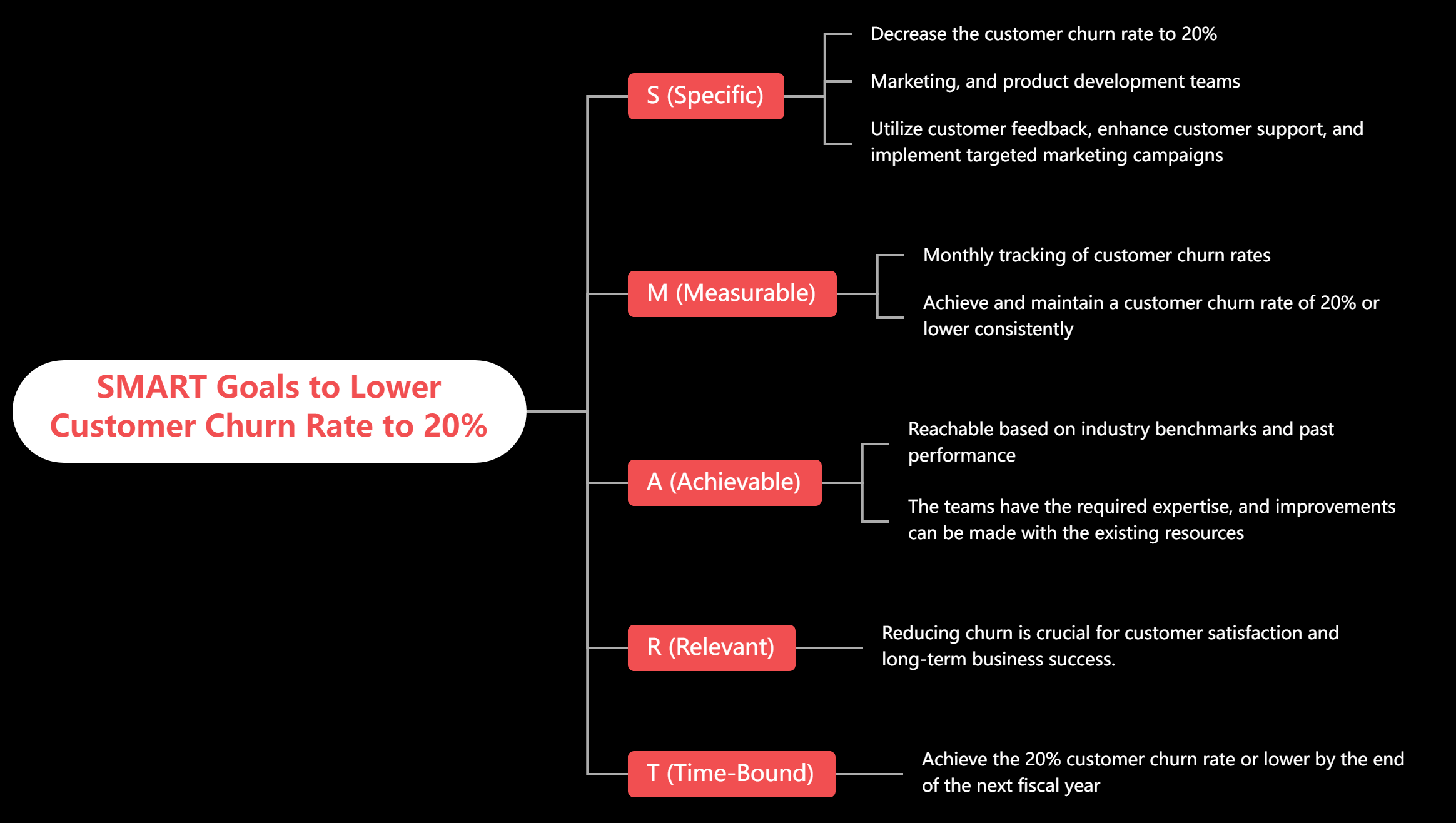
Customer Churn Rate
Customer Churn Rate, also known as customer attrition or customer turnover, is a crucial metric for businesses that measures the percentage of customers who stop using a product or service over a specific period. It is calculated by dividing the number of customers lost during a given period by the total number of customers at the beginning of that period. A high churn rate can indicate customer dissatisfaction, service issues, or increased competition, emphasizing the importance of retaining existing customers for sustainable business growth. Monitoring and understanding the reasons behind customer churn allows companies to implement strategies to improve customer satisfaction, enhance services, and ultimately reduce attrition.
Lower Customer Churn Rate with SMART Goals
This mind map outlines a SMART goal aimed at reducing the customer churn rate to 20%. The specific goal involves collaboration between marketing and product development teams, utilizing customer feedback, improving support, and implementing targeted marketing campaigns. The measurable aspect entails monthly tracking, striving to achieve and sustain a customer churn rate of 20% or less consistently. The goal is deemed achievable based on industry benchmarks and past performance, with the teams possessing the necessary expertise and utilizing existing resources. The relevance of this goal is emphasized by its impact on customer satisfaction and long-term business success. Time-bound, the objective is set to achieve the 20% customer churn rate or lower by the end of the next fiscal year.
Strategic Goal Setting Made Seamless with VP Smart Board
Creating SMART Goals with Visual Paradigm Smart Board is a seamless process that enhances clarity. Begin by defining Specific, Measurable, Achievable, Relevant, and Time-Bound objectives. With Smart Board’s intuitive interface, you can easily outline the specifics, establish measurable criteria, ensure achievability, relevance to overarching goals, and set a realistic time frame. The platform’s visual elements aid in breaking down complex goals into manageable tasks, fostering a shared understanding among teams. Real-time collaboration features enable cross-functional teams to contribute ideas and strategies collaboratively, ensuring a comprehensive and well-rounded approach. The flexibility of Smart Board allows for dynamic adjustments, adapting to evolving project needs. Transform your goal-setting process into an interactive and visually engaging experience with Visual Paradigm Smart Board.